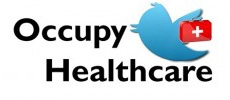
- Brenda Coffee’s blog Do You Have Pink Rabies which says it all
- Anne Marie Ciccarella’s site, where her essay THIS …It’s This Type of Stuff That is the Problem will blow your mind
- Linda Stacy’s Rethinking Pink – Why I Am Not Going Pink for Breast Cancer Awareness Month is on point
- Alicia Stales offers an older post on this same theme in her Thinking Pink and Seeing Red
- And here on OH, Laura Wells’ Beyond Pink article.
The breast cancer community has had enough of this phony baloney and is reclaiming the monthly observance for something more concrete and beneficial. This month a chorus has grown stronger to encourage people to personally support actual research in funds and action, no more wishy-washy promises. No more pretty pink ribbons. Just real action.
One of the problems with the pink movement has been a disconnect between the research that’s needed and the groups gaining funding. For example, an organization like Susan J. Komen with the lion’s share of funding has given a pittance of its funds toward research. Consequently, it fails miserably in the credibility department (as it does for some of its questionable marketing alliances). What’s worse is that for patients facing metastatic cancer, the treatments available to them are nearly identical to those offered back in the late ’80s. That means we must support research that makes dramatic strides possible. The solution is to opt for organizations that apply all or nearly all of their monies toward breast cancer research, especially where it has been lacking, as with metastatic cancer research. Interested in learning who is applying money where it is needed? Try the Lucy Fund for Metastatic Breast Cancer Research, where 100% of the funds go toward such research. The same is true for Stand Up 2 Cancer, where all public funding has underwritten research grants.
Another draw back of the pink celebrations has been the lack of progress regarding our knowledge of the disease. The Dr. Susan Love Research Foundation has teamed up the City of Hope Comprehensive Cancer Center to embark on an extraordinary research effort, where healthy people and those with breast cancer (including survivors) are invited to participate. (Full disclosure: Years ago, I used to work for City of Hope, so I can vouch for the good work they do.) This longitudinal study will follow all participants, posing surveys to them as the years pass, with the expectation that given a sufficiently large population, we can begin to truly understand how breast cancer manifests and why. It is the first international online breast cancer study and it is called “The Health of Women Study,” a.k.a. the HOW Study. Men are also invited to participate. The HOW Study will also gauge how breast cancer survivors are able to thrive over the long-term—insights that can help other patients on their recovery path. The research at City of Hope is led by a living legend, Dr. Leslie Bernstein, who is known for her pioneering work in epidemiology, particularly her findings on how daily living behaviors (e.g. exercise, smoking, etc.) can affect a person’s risk of breast cancer. If you want to have skin in the game, I urge you to join the study, pronto.
This month, let’s all give the pink slip to false promises and adopt a stance with more substance to achieving a rosier future.
